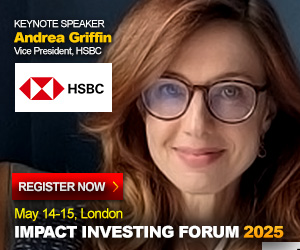10 Open Questions For The 40 Trillion-Dollar ESG Industry Forbes10 Open Questions For The 40 Trillion-Dollar ESG Industry Forbes
Impact Investing Forum 2025
https://impactinvestingconferences.com/
London UK. May 14-15, 2025.
Book Now!
Are ESG disclosures useful in understanding a company’s cash flows, value and stock returns? To stakeholders? Have past disclosure efforts to affect societal outcomes worked? What’s the best way to police the tragedy of the commons? Are ESG ratings useful? Do stakeholder-oriented institutions walk the talk? How effective is the audit function in certifying ESG disclosures? Does competition in private standard setting work? Is shareholder engagement more effective? Many questions on climate reporting and policy.
WASHINGTON, DC – SEPTEMBER 13: Teenage Swedish climate activist Greta Thunberg delivers brief … [+] remarks surrounded by other student environmental advocates during a strike to demand action be taken on climate change outside the White House on September 13, 2019 in Washington, DC. The strike is part of Thunberg’s six day visit to Washington ahead of the Global Climate Strike scheduled for September 20. (Photo by Sarah Silbiger/Getty Images)
Getty Images
ESG is a 40 trillion-dollar industry today, but the growing pains are obvious and everywhere you look. For starters, there is a huge amount of confusion associated with ESG ratings, standards, datasets, disclosures, investment strategies, and regulatory initiatives. So, I thought it might be useful to break through the noise of this confusion and pose a few open questions to the industry at large.
Today, I participated on a panel led by Mendoza College of Business Professor Peter Easton at this year’s annual CARE Conference on Climate Action. I used the opportunity to pose several questions that stem from my “trust but verify” approach to claims made by ESG practitioners and observers alike. Well aware of the audience, the questions are centered around ESG reporting and policy issues that I firmly believe answers to will go a long way towards bringing both the advocates and skeptics of ESG movement closer.
Let’s start with the big picture. To me, ESG is a set of three awkward monikers amalgamated into one package. The E, S and G are inherently different. We have quite a lot of work on G but less on E and S. On top of that, there are several definitional and measurement issues that one has to grapple with. What is S? Is it welfare of labor or corporate citizenship or tax transparency? Moreover, how do we make progress on G when we cannot observe what the board of directors does? We will deal with E a bit later.
In general, ambiguity in definitions makes falsifiability difficult. ESG can be anything that the advocate wants it to be. Having said, that the industry would benefit from a focus on climate, supply chain transparency, executive compensation and corporate governance. These ideas are easier to measure and verifiable change can be accomplished in the near term.
MORE FOR YOU
On to the questions:
1. Usefulness of ESG disclosures to investors:
Are ESG disclosures useful in understanding a company’s cash flows, value and stock returns?
I have not really come across solid work that links ESG disclosures and a company’s future cash flows, firm value and returns. A vast array of academic literature claims links between ESG ratings and firm performance. Others are marketing pieces written by consulting and asset management firms. I have trouble with what’s exactly captured in the black box of ESG ratings and how reliable the older academic and newer practitioner literature really is. The evidence thus far is, at best, the stronger for G, especially for executive compensation and corporate governance.
2. Usefulness of ESG disclosures to stakeholders:
When I raise question 1, critics often come back and say that the association between ESG and a company’s cash flows or stock returns is weak because these disclosures are meant to capture externalities or the negative impact of the company on society.
a. If so, the regulator or policy maker or the advocate needs to specify what social objective the regulator is trying to accomplish. Otherwise, how will we know whether the social objective was met? I have co-written a paper that looks at the U.K.’s gender pay parity rule and we ended up finding a very modest change in gender parity after the rule was passed.
b. The one area where I unreservedly support externality related disclosure, as I have written earlier, is the importance of political contributions and state aid. We find that the payoff to political influence seeking is as high as 20X and barely 15% of states require that companies specify what they have to do in return for state aid. More mandatory disclosure in this area will hopefully chip away at the cancer of crony capitalism.
c. Is impact accounting, or the idea of translating negative externalities into dollars for aggregation into a measure of stakeholder value, useful in moving the debate forward? Ken Pucker and Andy King have a new piece arguing that impact accounting is problematic partly because we can never know the true social cost of a negative externality such as say the absence of a diverse workforce. I am a bit less pessimistic.
Are we necessarily better off with non-comparable and non-aggregable data points on E, S and G? I agree that coming with the right social cost of natural resources is difficult without regulation. But that argument simply kicks the problem up by one level. How does the regulator know the right social price of the resource? Perhaps progress can be made by presenting a range of dollar outcomes. Engine no. 1 just announced its version of the stakeholder value model. There is nothing like a dollar number to focus hearts and minds.
3. Have past disclosure efforts to affect societal outcomes worked?
Have other attempts to make companies report how their activities affect societal outcomes worked? The conflict minerals rule, repealed by the previous administration, comes to mind. Is there good evidence to suggest that the conflict minerals rule or such a similar rule or mandate changed company behavior?
4. Best way to police the tragedy of the commons
More fundamentally, whose job is it to police the commons to prevent tragedies? The company’s or the government’s? And how would we know whether the policing worked? Perhaps both investors and the government are necessary to police the tragedy of the commons.
Government regulators can set expectations for outcomes, but practically will never have the capacity to implement oversight effectively. Investors can define and enforce standards to constrain business to those mandated outcomes, but left to their own, would never constrain themselves to meet outcomes that were not profit maximizing. For instance, the Federal Reserve sets capital requirements, but the Financial Accounting Standards Board (FASB) and the International Swaps and Derivatives Association (ISDA) define the rules.
5. Are ESG ratings useful?
Related to #1, how effective are third party ESG rating agencies in helping users make sense of these disclosures? Do they capture data beyond headline risk or negative mentions of the company in the press, as we seem to find? Engine no.1’s stakeholder framework to move beyond ratings is a welcome step towards this direction.
6. Do stakeholder-oriented institutions walk the talk?
Are self-proclaimed ESG friendly institutions, such as the Business Roundtable and the self-advertised ESG asset management funds walk the talk? My work suggests that progress along these lines is glacial at best.
7. How effective is the audit function in certifying ESG disclosures?
In my experience, the carbon and ESG auditors are effectively unregulated no-name ESG auditors. Some like Sustainalytics suffer from conflicts of interest in that they certify how companies issuing green bonds spend the funds raised and rate the ESG or stakeholder orientation of companies. By and large, there is barely enough information about these auditors. For instance, do they have the capital to survive even one lawsuit?
8. Does competition in private standard setting work?
The evolution of ESG standard setting is fascinating. Many academics have asked for competition in standard setting for financial disclosures. Well, currently there’s a range of agencies competing to standardize ESG disclosures (TCFD, SASB, IASB, GRI, etc.). Has private competitive standard setting led us to better place? Or are we better off with a second-best monopolistic standard setter such as the FASB? On the one hand, competition keeps standard setters much more responsive to the ever-changing needs of stakeholders in this space. On the other hand, competition creates multiple standards, multiple data points and less comparability across companies.
9. Is shareholder engagement more effective?
There are three ways to enforce social change: reporting, asset allocation in favor of ESG and shareholder engagement such as attempts by Engine no. 1 to affect emissions. Which of these mechanisms is more effective and in which context?
10. Questions on climate reporting and policy
Climate is perhaps the most pressing of the ESG issues. Interesting unanswered questions abound.
a. Are emissions priced by stock markets today? My work questions that assumption. This is not to say it should not be priced. All we say is that the evidence does not suggest its priced as of now in equities.
b. Is a net zero pledge credible? I have some work in progress suggesting vast differences among companies’ abilities and intent to actually meet their net zero pledge.
c. What kind of climate disclosures would be useful and to whom?
i. Quantitative or qualitative?
ii. How to deal with comparability and consistency? I believe we have 64 different carbon reporting standards that a firm can use today. Mind-numbing!
iii. Should the existing regime related to risk disclosures not cover this risk already? In particular, why do we not find a greater number of class action lawsuits filed by shareholders re: climate risk disclosures? If the comeback is that these disclosures are useful in explaining externalities, how does one square that with the regulatory push to vest ESG standard setting power with a shareholder focused standard setting agency? Is the absence of reliable ESG data a deterrent?
d. How do climate disclosures affect portfolio allocation and social outcomes?
e. Do we need mandatory disclosures in the area or is pressure from large institutions such as BlackRock enough? Have these climate disclosures worked before, especially in Europe?
Looking ahead on climate
In closing, to me, while questions on disclosures, ESG ratings and stewardship are important, I would emphasize three bigger climate issues that I would keep an eye on: (i) technology especially the explosion of climate-tech aimed at mitigation and capture of emissions; (ii) unintended costs and benefits of mandating carbon disclosures and taxes; and (iii) the role of government and public sector.
Green premiums
As I have written before, green premiums, or the cost of switching to a carbon neutral technology, are large. For instance, economy class tickets will likely go up by 300% if we were to consider carbon-neutral fuel. How will technology evolve to lower green premiums?
Will firms survive carbon costs or will it get passed on?
Turning to costs and who bears those, even a $50/ton carbon tax will be difficult for 2/3rds of U.S. firms to swallow, assuming they end up fully absorbing such a tax. Did mandating carbon disclosure, in Europe, have significant unintended positive or negative consequences? What would a carbon tax do to the affected firms’ fundamentals? My three pieces on the topic with Bob Eccles, a fellow panelist, seek to explore this question.
When will Governments put out ESG reports?
And, last but not the least, why have we understudied the carbon impact of government and the public sector? Does the United States Postal Service (USPS) emit more or less carbon than Amazon, which, in effect, has created a parallel mail dissemination system? Moreover, the scope 1 and 2 of publicly listed firms covers at best 40% of U.S. emissions. Public disclosure would not address the remaining 60% of carbon emissions.
Lots of interesting work lies ahead.
If you have questions (or answers) to add to my list, please send them in.



